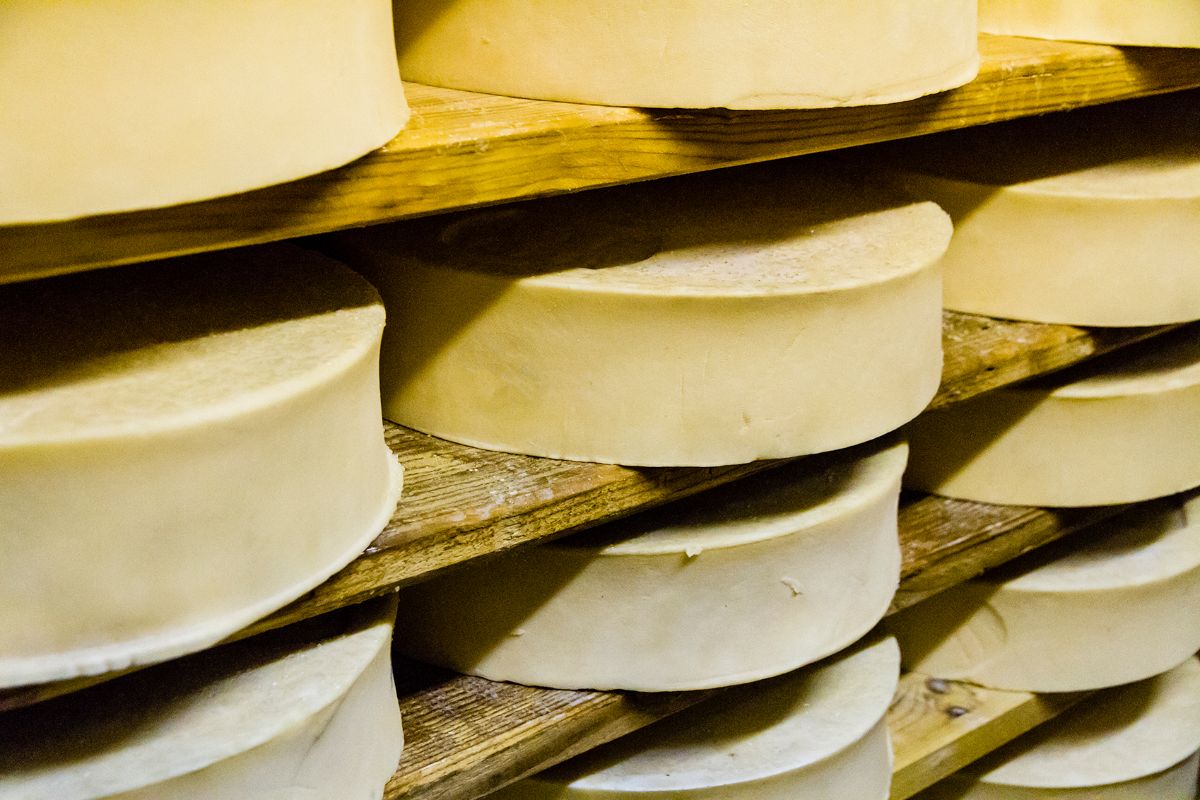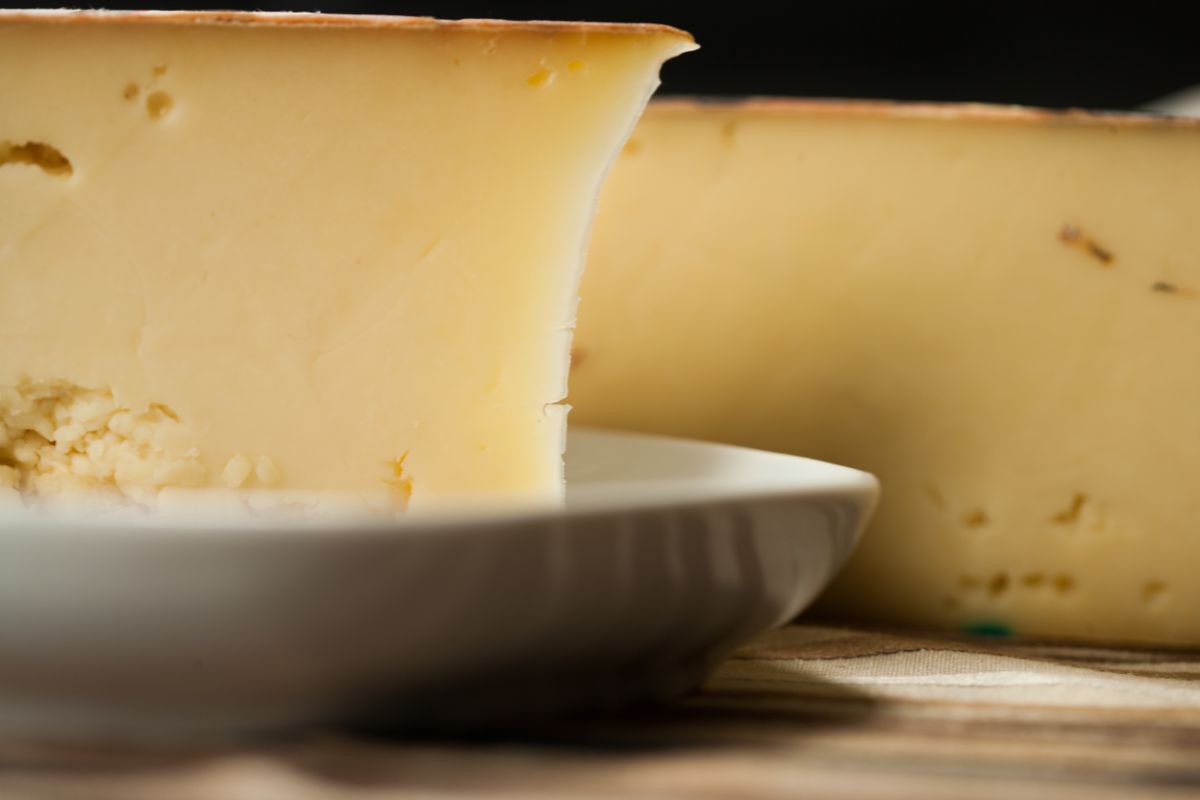When it comes to cheese, cheese lovers are spoiled for choice! There are countless different types of cheese for you to enjoy out there, and each of them are unique in their own way, with different tastes and textures.
A brilliant type of cheese that often gets overlooked, though, is fontina cheese. But why is it great? What does it taste like?

The short answer is that an Italian fontina cheese has a taste that’s medium-sharp and quite mild and savory, as well as being a bit nutty.
With that being said, though, fontina cheeses differ in their tastes depending on where else they are made.
There’s so much to learn about fontina cheese and the different tastes it offers depending on what country it was made in.
We’ve got all the information in our in-depth guide below, so you can learn all about this brilliant Italian cheese that’s popular in Italian meals and fondues.
What Is Fontina Cheese?
To begin with, let’s have a look at explaining just what this fantastic type of Italian cheese is.
Fontina is a cheese that’s made from cow’s milk, and it dates back as long as the 1100s, where it was first produced in the Alps.
In a nice touch, the cheese is still made there to this day, and the Alps version is by far the most popular and well-known.
However, fontina is made in all kinds of other locations too. For example, fontina is made in the United States, as well as countries like France, Denmark, Argentina, Sweden, and more.
With that being said, if your fontina has been produced in Europe then you’ll know so because it has a special Matterhorn stamp on it.
How Do They Make Fontina Cheese?
When they produce fontina cheese in these places, the cheese is typically made in a wheel. That cheese wheel is around 3-4 inches in thickness, and they often have a diameter that is between 13 and 15 inches.
The production processes might differ depending on the country in which the fontina is made, just as the taste differs, but we can look at the classic production process of fontina at least.
Fontina cheese is usually made from the milk of Valdostana cows, which are a breed of Italian cow that come from the region of Valle d’Aosta.
These cows are red-pied, though they have legs, faces, and stomachs that are white. In the summer, they graze on the mountain pastures of the Alps.
These grasses of the Alps are ideal for making the cheese, because they help to make it extra creamy.
The cows are milked and then the milk gets heated in special copper cauldrons. After that, enzymes are added into the milk.
These (along with the calf rennet, from the lining of the cow’s stomachs) help to provoke the milk into coagulation, which then creates the curds we need.
The cheese makers then wait for the curds to go firm, before straining the firm curd through a cheesecloth.
After that, the strained curd is put into a mold. It’s left there for 2 months, allowing it to brine. However, after a round of brining, the cheese is left for 3 months in humid caverns to age it further, adding salt too.
As you can see, the production of fontina cheese is quite a long-winded one, but it’s worth it in the end for such a creamy and mild cheese!

How Does Fontina Cheese Taste?
As we said earlier on in the article, fontina cheese is made in a variety of different countries all over the world. Its original and most prominent place of production is in the Alps.
These impressive mountain ranges stretch across various European countries, including Italy where the cheese is popularly made.
However, since fontina cheese is made in various different places, with different conditions and the milk of different cows, it naturally means that fontina cheese has lots of different tastes depending on where it was made.
All fontina cheese have a moderately sharp, slightly savory, taste to them with moments of tastiness.
They’re pretty pungent and sweet too, and they have a hint of nuttiness to them. However, the cheeses differ beyond these similarities.
We’re going to have a look at the tastes of all the prominent varieties of fontina cheese.
Valle d’Aosta Fontina Cheese
This is likely the most well-known version of fontina cheese, and it comes from Italy, where they use the Valdostana cows and graze them on the Alps in the summer.
As a result, this version is the closest to the original version of the cheese.
But how does it taste? Well, they have all the moderate sharpness, nuttiness, sweetness, and pungence that you’d expect. However, this one is especially earthy in its flavor, and it has an emphatic aroma.
The cheese also has a hint of mushroom to it, too, which is usually when the cheese has been produced using unpasteurized milk.
On top of this, this fontina cheese is a little less moist than other varieties, which makes it melt less well than the others too.
United States Fontina Cheese
Meanwhile, fontina cheeses that have been made in the United States have a distinct flavor of earthiness to them with strong hints of mushroom, which is the same for Italian and Danish fontina.
With that being said, this is the mildest version of fontina you’ll find, so it’s a good pick for mild cheese lovers! On top of that, it’s really moist.
Danish Fontina Cheese
The fontina cheese that’s made in Denmark is a lighter and softer variety, which is due to it being produced with pasteurized milk and being brewed for less time.
With that being said, the fontina still keeps its classic savory and nutty flavor.
Swedish Fontina Cheese
If you’re getting a fontina cheese that’s been made in Sweden, then you can expect a version that’s tangier and tarter than classics like the Italian variety.
However, that isn’t to say they aren’t still nutty and sweet! They have these flavors in subtle hints.
Different Types Of Fontina Cheese
There are also some different derivatives of fontina cheese.
Fontinella Cheese
This type of fontina is made in Wisconsin in the US, but it’s got a far sweeter flavor to it than the main cheese. Meanwhile, it’s plenty creamy too, making it perfect for melting in a fondue. However, it’s still got subtle nuttiness, and it’s quite sharp.
Frontal Cheese
This type comes from Italy, and it’s notable for its mildness. It’s got a milkiness to it, as well as hints of subtle spiciness in there for more depth. On top of that, it’s got fruity notes.
Final Thoughts
Fontinella cheese is delicious no matter where it comes from. Each place makes a different tasting fontinella, but they all share a moderate sharpness, savoriness, and nuttiness.
- How To Reheat A Cheesesteak - November 5, 2023
- What Are Three Must Have Kitchen Knives? - September 22, 2023
- How To Protect Edges Of Pie Crust - June 15, 2023








